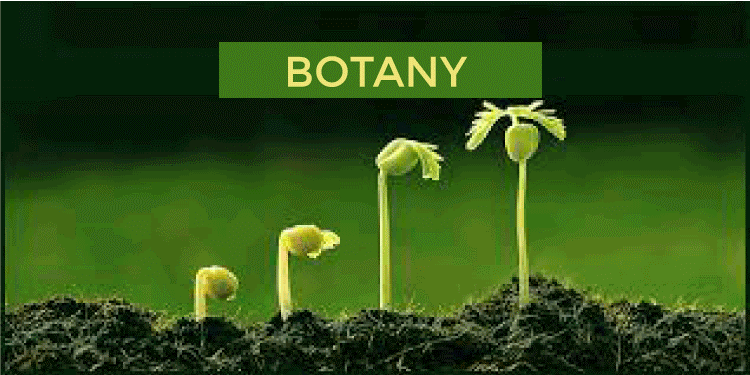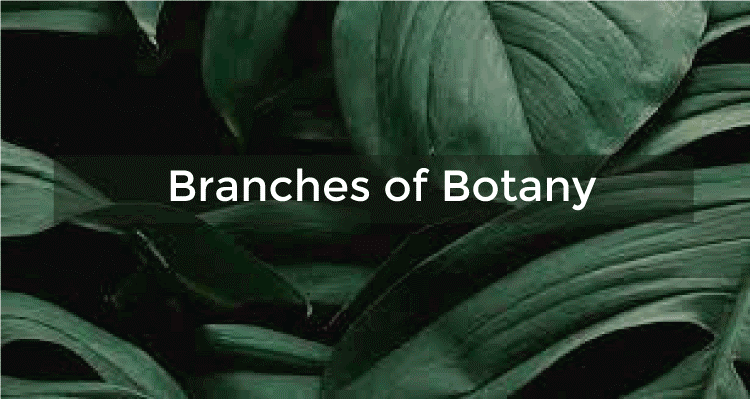Botany- DefinitionBotany, also known as plant science or plant biology, is one of the oldest natural studies in the world. Therefore, most schools and universities' Natural Science or Biology departments will offer a botany or plant science degree. Numerous prestigious colleges offer botany degrees, although fewer students are choosing it now than in previous years in preference of other environmental and natural disciplines. Most biology undergraduate degrees will include a course in plant studies, but as students advance to graduate school, this course gets more specialist. The majority of states' major institutions offer MS degrees in botany. Since the field is still in demand despite its declining popularity, graduates with a BS should be able to find a job in their chosen profession. Graduates of botany pursue a wide range of careers, including teaching biology in high schools, weed control, soil science, science communication, and agriculture. Like in other research positions, a master's degree is usually required. The word "botany," like the names of many other scientific fields, is derived from the Ancient Greek word "botan," which mean "pasture" or "fodder," among other things. It encompasses everything that might be regarded as a plant, including vascular plants like ferns, algae, fungi, and flowering plants. Although it typically includes trees, this is gradually becoming a specific topic. It is now a component of a larger ecology study, with all the characteristics of natural science that implies. 
We might not initially think of botany as having applications, but it often does. Many of our early medications were made from plant extracts; for example, aspirin was discovered through research on rotting tree bark, while penicillin was created from a mold. Studying botany is still necessary today because climate change's consequences are predicted to impact our environment, particularly plants significantly. After all, we depend on them for carbon sinks, among other things. History of BotanyAlthough landowners' study of plants and trees as they observed the ones on their property and the exotic specimens they would bring back from their journeys gave rise to the science of botany as we know it today, human interest in plants has existed for far longer. Fruits and vegetables have been essential to our social development since the dawn of the Neolithic Revolution, possibly even earlier. Humans sought to identify plants with medicinal properties, their growing seasons, those that could or could not be eaten, how to selectively breed them for hardiness or larger yields, and more. Humanity has studied plants scientifically since before there was such a thing as science as we know it. This knowledge propelled the Agricultural Revolution in the development of crops, among other things. When we talk about excess in society, we typically mean crops. As civilization spread throughout the nearby Middle East, it was largely due to the development of Neolithic farming techniques. It is not surprising that there were notable individuals who did their utmost to advance science during the great learning periods of ancient Greece and Rome. Early pioneers in the study of plants were Aristotle, Theophrastus, and Dioscorides. The latter is referred to as "The Father of Botany" because of two essential works that continue to be utilized today. Additionally, the study is not just confined to Western civilization; for example, Chinese civilization advanced about on par with Greek civilization simultaneously, and there may have been some information exchange due to The Silk Road. There would be minimal advancement during the following 1500 years, and most botanical research was confined to academic institutions like monasteries and universities. Most of this information, however, was what had been passed down from Greek and Roman civilizations. Physic gardens were popular at some of the major monasteries in the Christian world, and these were crucial for the little research there was into the medicinal qualities of plants. Plant science was made possible by the Renaissance, Reformation, and the start of the Enlightenment, as with many other disciplines. After the invention of the microscope in the late 16th century, we could study plants in a way that was never possible before, including the smallest components like phytoliths and pollen. We could examine the plants' reproduction, metabolism, and other hitherto unattainable elements and learn about the plants themselves. In addition to scientists, common people were beginning to appreciate plants for their own sake rather than just for their usefulness. Rich landowners donated enormous swaths of land for parks and gardens, and public gardens were established worldwide. Most botanic gardens were founded to classify, label, and trade seeds. These are now important research institutions that frequently have affiliations with universities. Although the BSA (Botanical Society of America) initially only admitted members from the United States and Canada, it is now one of the most prestigious botanical societies, with members worldwide. The BSA was founded in 1893. Due to the expanding interest in plants and the growing popularity of Charles Darwin's theory of evolution, several other nations created botanical societies during this century. Due to increased awareness of the implications of climate change, botany has had a renaissance in recent years. Although we may have learned a lot about most individual plants, in the coming years, they will be crucial in helping us understand future ecology. Divisions of BotanyBotany has developed several specialized fields and offshoots due to how big and diverse it is today and its many significant applications in various disciplines. The most noteworthy are listed below: 
Plant PathologyMany researchers focused their efforts on plant pathology because, as should be obvious, if disease wipes out a sizable portion of a staple crop, people starve. The Irish Potato Blight of the 19th century is when most advances in plant disease research were made. Many Irish people immigrated to North America during the "Potato Famine" of the 1840s, largely caused by the disease that decimated the crops on which they had grown to depend. Potato blight causes the tuber or the roots to rot, ruining the entire crop. One of the worst famines ever in the western hemisphere was brought on by the widespread of this disease. Plant pathology is still a crucial aspect of botany today as we work to adapt crops to climate change and stay one step ahead of mutating diseases. Combating the various diseases that threaten banana production is an ongoing research issue for plant pathologists. Due to current cultivars' limited genetic diversity and lack of seeds, some species have already become extinct, and others are still in danger. Understanding plant pathology is essential for understanding illness and potential issues brought on by climate change. Plant EcologyPlant ecology is distinct from botany in that it is more focused on how plants interact with their surroundings, including how they interact with and in soils, with various animal species, how they respond to ecological change like climate change, and numerous other aspects of the larger landscape. To breed or otherwise modify our staple plants to survive and adapt to changing settings, it is essential that the world understands climate change and does something about it. The developing science of GM crops and cross-breeding for hardier crops to flourish in what we refer to as "marginal landscapes" is also essential, as human population growth necessitates using additional land. The eleven major environmental types recognized by plant ecology include tropical forest, temperate forest, coniferous forests, tropical savannah, temperate grassland/plain, desert and other arid ecosystems, Mediterranean-like regions, terrestrial wetlands, freshwater ecology, coastal/marine ecology, and tundra. Each plant has a unique ecological profile, and understanding the interactions between balanced plant and animal life is just as important as understanding the characteristics of each plant. PalaeobotanyThe study of extinct or fossilized plants found in geological layers is known as paleobotany. As with present plants in these taxa, palaeobotanists will also investigate fossilized algae, bacteria, fungi, and lichens. Understanding previous climate change relies heavily on paleobotany, demonstrating each climate zone's ecological composition at a specific time in our history. Extensive research in South America has revealed the precise timeline of the development of the tropical rainforests there and the factors that influenced their evolution. Additionally, this information will notify us of potential future changes due to a changing environment. The characteristics and diversity of plant species during the Ice Age are being revealed by paleobotany. One study looked at the land bridge connecting modern Siberia and Alaska, demonstrating how people may have lived there and crossed it in the past. ArchaeobotanyAlthough most scholars in this discipline have backgrounds in anthropology or archaeology, a botanist will be equipped to enter the field of researching how people in the past used plants. This field can be useful in examining crop farming development, wetland drainage, irrigation, and other ecological engineering techniques. Still, it can also inform us about how earlier generations interacted with plants. As we've just discussed, some plants have medical capabilities, while others have had and still do have spiritual importance. Sometimes comprehending a plant can also help us comprehend historical beliefs. Archaeobotanists will examine plant remnants other than those in the soil, such as those on stone tools and in broken pottery. It is crucial to distinguish between changes brought about by nature and changes brought about by ecological engineering by humans to comprehend how habitats develop. As landscapes undergo significant change solely due to human developments, including, in some cases, the growth of the market economy, seeds, and other plants can be excellent indicators of change. Archaeobotany has been essential for tracing the Neolithic Revolution's spread. Forensic BotanyCriminal investigations use any available evidence, and forensics has seen the most advancement and innovation over the past few decades. What information about a crime scene or a body can plants provide? When we understand the composition and profile of particular plants, plant evidence can tell us quite a bit, just like pollen and other tiny plant remains. A forensic botanist may examine plant evidence found on bodies instead of studying human remains or using criteria that could reveal where a person has been or is currently buried. The kidnapping of Charles Lindbergh's son is one of the most notable instances in history. According to criminal historians, it was the first time botany was used in a criminal prosecution. The prosecution called a tree expert as a witness. His testimony suggested that the kidnapper was likely a skilled carpenter to have devised and constructed such a sophisticated and distinctive ladder to facilitate the kidnapping; the strong testimony was accepted into the evidence base. Since then, forensic botany and the use of plants as evidence in criminal trials have advanced significantly. It is now possible to utilize evidence to determine whether a death was caused by homicide, suicide, or accident.
Next TopicCareer Definition
|
 For Videos Join Our Youtube Channel: Join Now
For Videos Join Our Youtube Channel: Join Now
Feedback
- Send your Feedback to [email protected]
Help Others, Please Share










